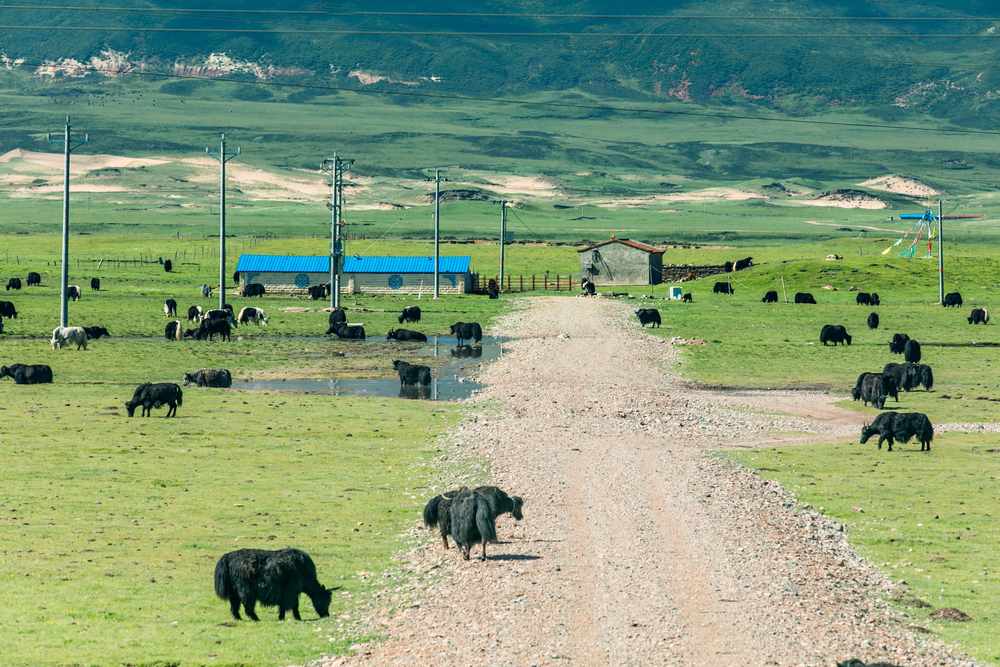
Step by step guide to get in Nepal Share Market
If you are a complete beginner in the Share Market, here is a step by step guide to get in Nepal Share Market. Let's dive deeper into it. Stick with us till the end Also see: 5 things to know...

Wanna know about the small enterprises in Nepal? Enterprise is the ability to turn a thought into a successful business. A company is different, as it combines the other three factors: land, employment, and capital. Enterprise is a different word for a profit enterprise or enterprise, but it is most often linked with business enterprises.
There are many small enterprises in Nepal both inside Kathmandu Valley- The capital city of Nepal and outside Kathmandu Valley.
In the economic development of a country, SMEs (Small and Medium-sized enterprises) play an important role. Their role is very critical in terms of production, job creation, export contribution, and income. The contribution of small and medium-sized enterprises to generating jobs, eliminating poverty, and to advancing the private sector, in general, is extremely important.
The 2010 study showed that SMEs employ about 57 percent of the entire workforce in Nepal. SMEs makeup over 96% of all industries and contribute 83% to the generation of industrial jobs. They also account for 80% of the contribution of the industry to the national gross domestic product (GDP). However, in addition to the nation's macro-challenges to political instability and insufficient resources, access to finance and poor governance are restricted for SMEs.
The services to help smaller producers improve their capacities by spreading information about companies and markets, improving their skills, regulating them minimally and making government agencies more hastily, and easing alliances. It is also done by networking arrangements between small enterprises as well as larger producers and exporters.
The government is taking various steps towards small and medium-sized enterprises. Further, various government policies to support infrastructure, upgrade technology, preferential access to credit, preferential policy support, etc have supported and encouraged the SMEs.
A large number of capable and potential entrepreneurs, deprived of appropriate opportunities, may be provided with opportunities by the small sector. It can help to make small capital available for productive use. SMEs can take advantage of lean output and find new, cost-effective lean output techniques.
Since small units can more efficiently utilize resources without waste to their full capacity, they can achieve higher allocation efficiency. Because the risk element in SMEs is low, a large number of workers use more resources. The starting point for developing economies towards industrialization are micro, small, and medium scale enterprises (MSMEs). But the impact of MSMEs on revenue, tax revenues and jobs, efficient resource use, and family income stability is important. MSMEs are now widely recognized for their contribution to jobs, growth, and sustainable development.
In both developed and developing countries, their contribution to job creation and output growth has become widely accepted. It can also help to make the benefits of economic growth fairer and thus help to alleviate some of the problems associated with the uneven distribution of income. There are several micro and small enterprises in many developing and least developed countries (LDCs) that play a key role in the economic developments of the country.
The Nepalese population is approximately 2.61 million, and its economy depends heavily on agriculture, where over 78.1% of the workforce total is employed and about 39% of GDP. There is still a small but rapidly growing manufacturing industry. This represents approximately 10% of GDP. On the other hand, the vast countryside has 85.8% of the country's population.
The poverty reduction strategy has been focused on the country's economic plans on generating and improving autonomous jobs through the development of micro-enterprises. PNUD Nepal funded a program for the development and sustainable development of micro-enterprise enterprises (MEDEPs) in rural households to address the problem of poverty and employment. The mid-term program review in 2000 however showed that a favorable policy and regulatory environment is critical to the growth of micro-companies.
The 1998/99 Nepal Labor Survey found 1.6 million people employed in MSEs. However, women work in micro-businesses more than men, while men are more likely to work in small businesses than women. The 2005 ILO MSE survey showed that three employees per MSE were on average. However, this number increased to 17.9 employees per company when looking at small companies alone. The manufacturing sector, followed by trade and services, is the most employed.
The ratio of self-employed people in micro-businesses was high at 75.4% compared with 17.5% for small companies. Consequently, micro-enterprises have created job opportunities for the self-employed. A 1999/2000 survey showed that in Nepal there were 87,342 small production facilities. Until 1990/9 1, the cottage industry was totaling 47,426 registered, which is 2009/10 amounted to 2.16,663.
The survey found that 60.3% of small companies were registered. It is estimated that approximately 6,00,000 micro-enterprises operate in both registered and unregistered rural and urban areas. As an agricultural country, most established micro-enterprises are either agro-based, forest-based, or animal-based, and others include metal-based products and weaving, and shops and restaurants.
Small and family-owned micro-businesses are generally run from home. Depending on the company, it can adversely affect the home environment (e.g. poultry raising, wool carding, chemical dyeing, welding, furniture repairing). This impact is rarely documented because of its origin at home. Notwithstanding these restrictions, micro-businesses tend to be more profitable because they do not value their work and the overhead is reduced. Micro-enterprises are among the more viable options for job creation and consequently poverty reduction in underdeveloped countries such as Nepal.
Moreover, the development of such companies may provide a relatively broader section of the NEPAL population with jobs, thereby reducing the income disparity, as the Nepalese company is characterized by social exclusion. In the informal sector, a large number of small companies are located. The various industrial acts of Nepal do not regulate these companies, although they generate significant revenues and local jobs and are often ignored by the government.
If you are a complete beginner in the Share Market, here is a step by step guide to get in Nepal Share Market. Let's dive deeper into it. Stick with us till the end Also see: 5 things to know...
CIA reports that the main industries in Nepal are the tourism industry, tapestry and textiles industry, small rice jute factories, sugar, and olive mills as well as cigarettes, cement plants, and brick mills. Besides manufacturing in rice, wheat, and oil...